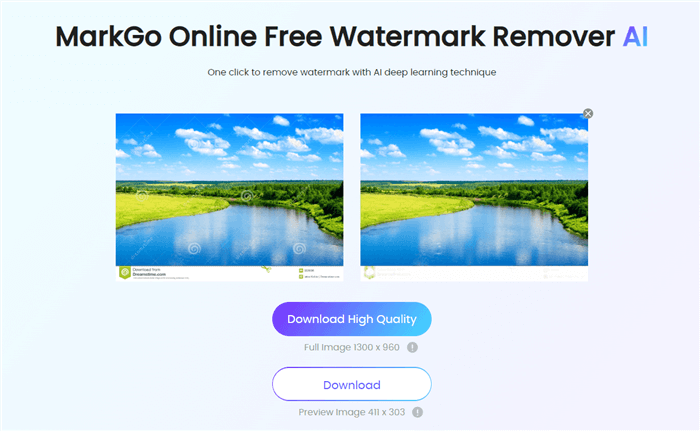If you’ve ever come across a stunning image on Shutterstock but noticed that it’s watermarked, you might wonder how to remove that pesky overlay to use the photo freely. Watermarks are there to protect the rights of photographers and stock image providers, but sometimes, you might want to see the full-quality image or use it for personal projects. In this guide, we’ll explore some methods—most of which are free and online—to help you understand how to remove Shutterstock watermarks. Just a heads-up: always respect copyright laws and use images ethically!
Understanding the Legal Implications of Removing Watermarks

Before diving into any techniques to remove watermarks, it’s crucial to understand the legal side of things. A watermark isn’t just a pretty overlay; it’s a clear sign that the image is protected by copyright. Removing or attempting to bypass watermarks without permission can lead to serious legal consequences, including fines and lawsuits.
Here’s what you need to keep in mind:
- Copyright Infringement: Removing a watermark with the intent to use the image commercially or publicly without paying for it is considered copyright infringement.
- Personal Use vs. Commercial Use: Using watermarked images for personal projects might seem harmless, but it still infringes on the creator’s rights. Commercial use requires proper licensing.
- Fair Use Limitations: Fair use might cover some cases like commentary or critique, but it rarely applies to removing watermarks for personal use.
- Respect the Creators: Photographers and artists rely on licensing fees for their livelihood. Respect their work by obtaining images legally.
In essence, while it might be tempting to remove watermarks to access free images, doing so without proper rights is unethical and illegal. The best approach is to purchase the image, look for free licensed alternatives, or use images that are explicitly marked as free to use. If you do decide to work with watermarked images, ensure you have the right permissions to avoid any legal trouble down the line.
Methods to Remove Shutterstock Watermarks Online for Free

If you’ve ever found yourself needing a watermark-free version of an image from Shutterstock without spending a dime, you might be wondering if it’s really possible—and how. The truth is, there are a few methods people have tried, but it’s important to remember that removing watermarks without proper authorization can infringe on copyright laws and Shutterstock’s policies. Always make sure you’re using images legally and ethically.
That said, for educational purposes or personal projects where you have the right to use the images, here are some common methods people explore:
- Using Online Watermark Removal Tools – There are several free online tools designed to automatically remove watermarks from images. They typically use AI or advanced algorithms to detect and erase watermarks, but results can vary depending on the complexity of the watermark.
- Manual Editing with Photo Editors – Free photo editing software like GIMP or Paint.NET can help you manually erase watermarks using clone or healing tools. This method takes a bit more skill but can give better results when done carefully.
- Screenshot and Cropping – Sometimes, simply cropping out the watermark is the easiest solution, especially if it’s placed at the edges of the image. Alternatively, taking a screenshot of a watermark-free portion of the image can work if you have access to a high-quality preview or thumbnail.
While these methods might seem straightforward, keep in mind that none are foolproof or entirely legal unless you have the necessary rights or permissions. The best approach is always to purchase or license images properly. However, understanding these techniques can help you recognize watermark removal when you see it and ensure you’re not unintentionally using images improperly.
Step-by-Step Guide for Removing Watermarks with Popular Tools
If you decide to proceed with removing watermarks for personal use or other legitimate reasons, here’s a simple step-by-step guide using some popular free tools. Remember, always respect copyright laws and use images responsibly.
Using Inpaint Online
Inpaint is a user-friendly online tool that helps remove unwanted objects, including watermarks, from images.
- Visit the Inpaint website at https://www.theinpaint.com/.
- Upload your image by clicking the “Upload Image” button and selecting your Shutterstock image.
- Use the marker tool to highlight the watermark area. Make sure to cover the entire watermark for best results.
- Click “Erase” and wait for the tool to process the image.
- Download the cleaned image once processing is complete. You may need to do some minor touch-ups if necessary.
Using GIMP (Free Downloadable Software)
GIMP is a powerful open-source image editor that allows manual removal of watermarks.
- Download and install GIMP from https://www.gimp.org/.
- Open your Shutterstock image in GIMP.
- Select the Clone Tool from the toolbox (it looks like a stamp).
- Hold down the Ctrl key (or Command on Mac) and click on an area close to the watermark to sample it.
- Carefully brush over the watermark, replacing it with the sampled area. Adjust the brush size as needed.
- Repeat the process until the watermark is fully removed and the background looks natural.
- Save the image in your desired format.
Using Fotor Online
Fotor is another popular free online photo editor that offers a simple watermark removal feature.
- Go to Fotor’s website at https://www.fotor.com/.
- Upload your image by clicking “Edit” and selecting your Shutterstock image.
- Navigate to the “Beauty” or “Retouch” tools, and look for options like “Clone” or “Heal”.
- Use the tools to carefully cover the watermark area.
- Apply changes and preview the image.
- Download the final version once satisfied.
Each tool has its strengths and limitations, and results can vary. Practice patience and take your time to achieve the best possible outcome. Remember, these methods are best suited for personal projects, learning, or images you have rights to use. Always prioritize ethical and legal considerations when handling copyrighted material.
Tips to Ensure Image Quality After Watermark Removal
Removing a watermark might seem straightforward, but if you’re not careful, it can compromise the quality of your image. Whether you’re doing it for personal projects or just experimenting, maintaining the original quality is key. Here are some helpful tips to make sure your images look sharp and professional after removing those pesky watermarks.
1. Use High-Resolution Images from the Start
When working with images, always opt for the highest resolution possible. High-quality source images give you more room to work with during the removal process. Even if the watermark removal isn’t perfect, you’ll still have a good base to work from, and you can perform some light editing to restore clarity.
2. Choose the Right Removal Method
Not all watermark removal tools are created equal. Some might leave behind artifacts or blur parts of your image. For best results, use tools that employ intelligent algorithms, like those based on AI or content-aware technology. These methods analyze the surrounding pixels to seamlessly fill in the watermark area, preserving the overall image quality.
3. Perform Fine-Tuning Post-Removal
After removing the watermark, zoom in and examine your image closely. You might notice some inconsistencies or blurring. Use photo editing software like Photoshop or free alternatives such as GIMP to retouch these areas. Adjust sharpness, contrast, and color balance to match the rest of the image and restore a natural look.
4. Avoid Over-Editing
It’s tempting to go overboard trying to perfect an image, but over-editing can introduce noise or unnatural effects that degrade quality. Take a subtle approach—small tweaks often produce the best results. Save different iterations and compare them to find the most authentic finish.
5. Save in the Correct Format
When you’re done, save your image in a format that preserves quality, like PNG or TIFF. JPEGs are compressed and can lose detail, especially if edited multiple times. Also, keep a backup of the original high-res file just in case you need to start over.
Remember, achieving a high-quality result after watermark removal takes patience and practice. With the right tools and techniques, your images can look just as stunning as the original — free of watermarks and full of clarity!
Alternatives to Removing Watermarks Legally
While watermark removal might seem like a quick fix, it’s important to remember that it often crosses legal lines and infringes on copyright. Instead of trying to remove watermarks illegally, there are plenty of legitimate ways to access or use images without violating rights. Let’s explore some of these ethical alternatives:
- Purchase or License the Image: Many stock photo websites, including Shutterstock, offer options to buy or license images legally. This way, you get high-quality images without watermarks, and you’re respecting the creator’s rights.
- Use Free Stock Image Platforms: Websites like Unsplash, Pexels, and Pixabay provide a vast collection of high-resolution images that are free to use for personal and commercial projects, often without attribution.
- Look for Creative Commons Licensed Images: Some images are shared under Creative Commons licenses, which specify how you can use them. Always check the license terms to ensure compliance.
- Create Your Own Content: If you have the skills or resources, making your own images is the best way to ensure originality and avoid copyright issues.
- Ask for Permission: If you find an image you love but it has a watermark, consider reaching out directly to the creator or owner for permission or to purchase a license. Many photographers and artists are happy to work with you.
By choosing these legal options, you not only stay within the law but also support talented creators and the industry as a whole. Remember, creators put a lot of effort into their work, and respecting their rights helps ensure they can continue producing beautiful content for everyone to enjoy.
In summary, while it might be tempting to look for quick fixes online, the best long-term approach is to use images ethically and legally. Whether you buy, license, or create your own images, you’ll save yourself potential legal trouble and gain access to higher-quality, authentic visuals for your projects.
Conclusion and Best Practices for Using Shutterstock Images
Using Shutterstock images can greatly enhance the visual appeal of your projects, but it’s essential to do so ethically and legally. Always remember that watermarks are there to protect the rights of content creators. Attempting to remove watermarks without proper licensing not only violates Shutterstock‘s terms of service but can also lead to legal consequences. To avoid such issues, always purchase the appropriate license for the images you intend to use. This ensures you have the legal rights to utilize the images in your projects without concern.
When working with Shutterstock images, consider the following best practices:
- Obtain proper licenses: Always purchase the correct license type (Standard, Enhanced, or Enterprise) based on your usage needs.
- Give credit when required: Some licenses or platforms may require attribution; ensure you follow these guidelines.
- Use high-resolution images: Choose the appropriate resolution for your project to maintain quality.
- Respect copyright laws: Never attempt to remove watermarks or alter images in ways that infringe on copyright protections.
- Maintain ethical standards: Support content creators by respecting licensing agreements and avoiding unauthorized modifications.
In summary, the best way to enjoy Shutterstock images is to use them responsibly and legally. Proper licensing not only protects you from legal issues but also supports the hardworking photographers and artists behind these images, ensuring a sustainable creative ecosystem for everyone involved.


